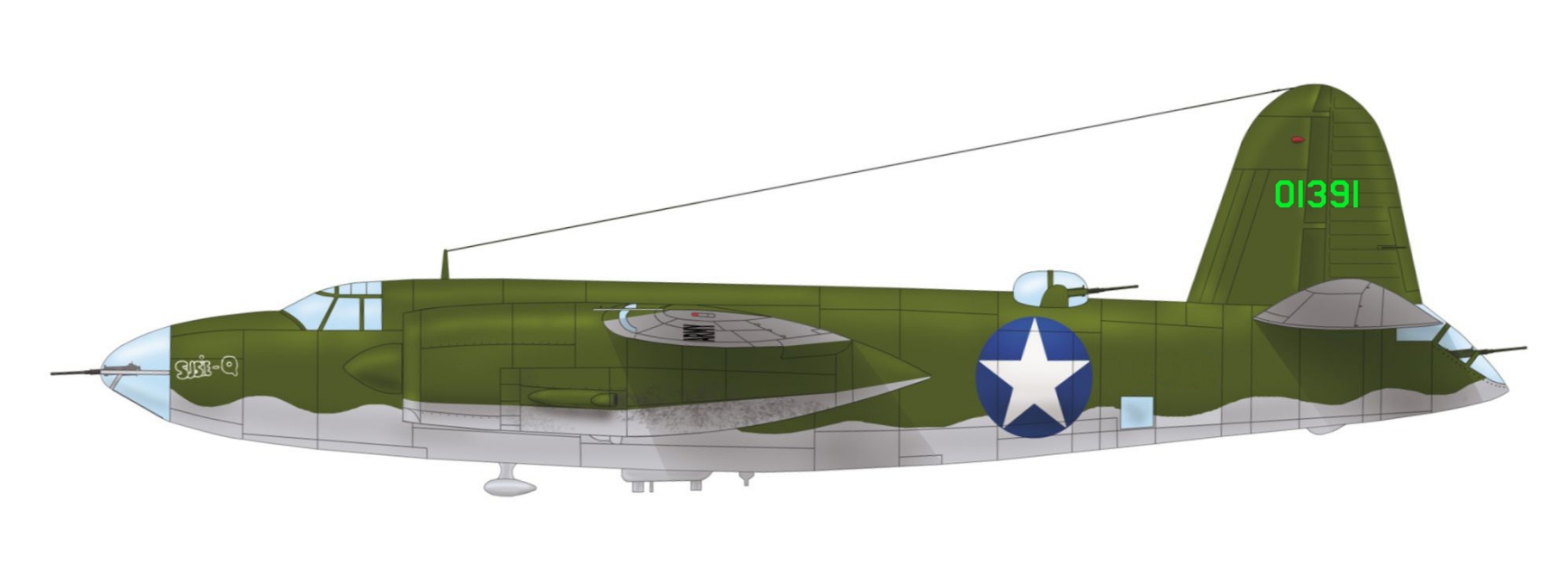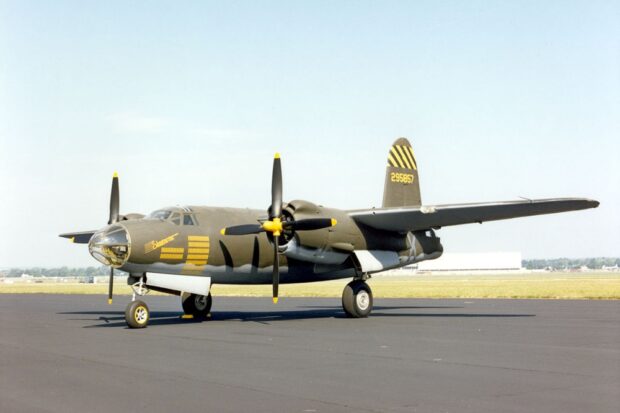The Martin B-26 Marauder is an American twin-engined medium bomber that saw extensive service during World War II. The B-26 was built at two locations: Baltimore, Maryland, and Omaha, Nebraska, by the Glenn L. Martin Company.
First used in the Pacific Theater of World War II in early 1942, it was also used in the Mediterranean Theater and in Western Europe.
After entering service with the United States Army aviation units, the aircraft quickly received the reputation of a “widowmaker” due to the early models’ high accident rate during takeoffs and landings. This was because the Marauder had to be flown at precise airspeeds, particularly on final runway approach or when one engine was out. The unusually high 150 mph (241 km/h) speed on short final runway approach was intimidating to many pilots who were used to much slower approach speeds, and when they slowed to speeds below those stipulated in the manual, the aircraft would often stall and crash.
The B-26 became a safer aircraft once crews were retrained, and after aerodynamics modifications (an increase of wingspan and wing angle-of-incidence to give better takeoff performance, and a larger vertical stabilizer and rudder). The Marauder ended World War II with the lowest loss rate of any U.S. Army Air Forces bomber.

Drawing of the Martin B-26-MA Marauder (s/n 40-1391) “Susie-Q” of the 18th Reconnaissance Squadron, 22nd Bombardment Group, USAAF, that was flown by 1/Lt James Perry Muri during the Battle of Midway on 4 June 1942. It received over 500 bullet holes and was written off after landing at Midway. The nose art with “Susie-Q” was cut out of the nose and kept as a souvenir. The rest of the B-26 was bulldozed into a barge and dumped into the lagoon off Midway. Note: This drawing originally showed 40-1436 of the 22nd Bomb Group that was scrapped in Brisbane in January 1944. The serial number was normally painted on the tail
In total, 5,288 were produced between February 1941 and March 1945; 522 of these were flown by the Royal Air Force and the South African Air Force. By the time the United States Air Force was created as an independent military service separate from the United States Army in 1947, all Martin B-26s had been retired from U.S. service. After the Marauder was retired, the unrelated Douglas A-26 Invader then assumed the “B-26” designation, which led to confusion between the two aircraft.
Top Photo: Martin B-26G-11-MA Marauder, 43-34581, at the National Museum of the United States Air Force, marked as B-26B-50-MA, 42-95857, written off in an accident on 19 April 1945.
Sources: Wikipedia; YouTube

